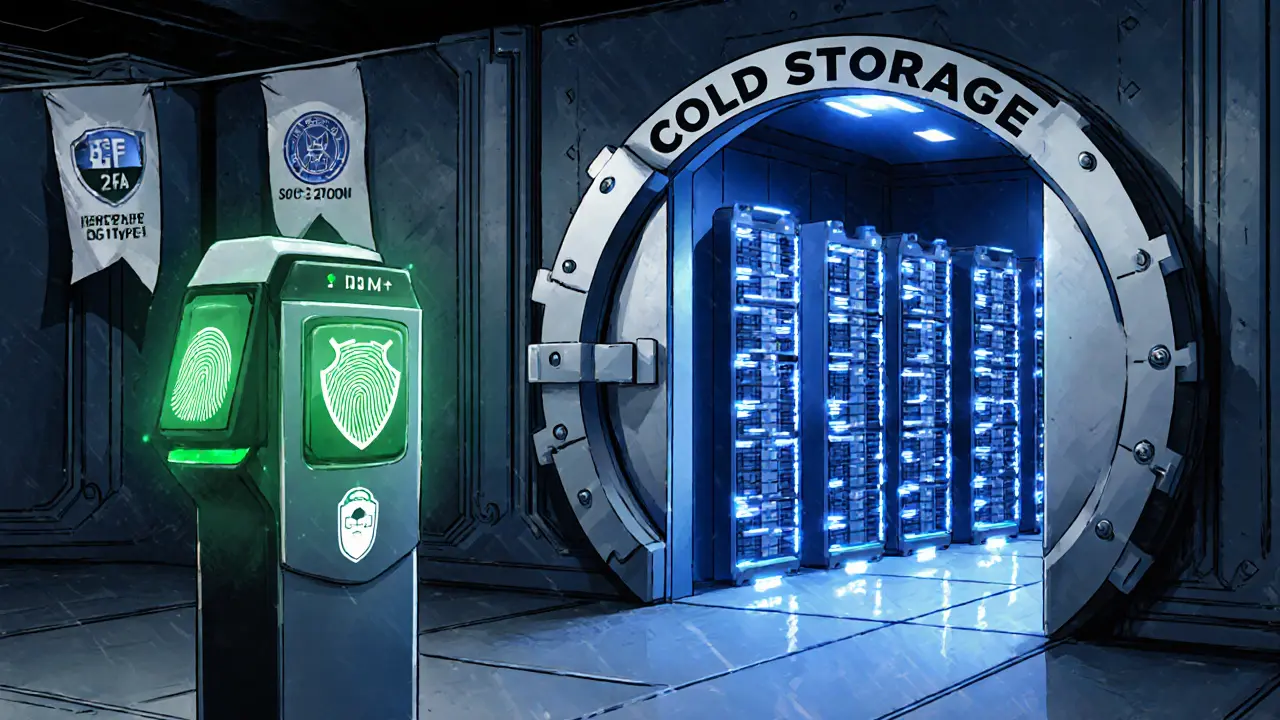Cold Storage: Secure Your Crypto Assets
When working with cold storage, a method of keeping cryptocurrency private keys offline, away from internet threats. Also known as offline storage, it provides a layer of protection that internet‑connected wallets simply can't match. Cold storage isn’t just a buzzword; it’s the backbone of long‑term crypto safety. It encompasses hardware wallet, a physical device that stores private keys in an air‑gapped environment. Because the keys never touch a network, the risk of hacks drops dramatically. This first line of defense also requires good key management – you need a safe place to store the device and a backup seed phrase that’s equally offline.
How Cold Storage Connects with Exchanges and the Wider Ecosystem
Even if you keep most of your holdings in a hardware wallet, you’ll still interact with a crypto exchange, a platform that lets you trade, buy, or sell digital assets. The exchange acts as the bridge between your cold vault and the active market. When you want to sell, you move coins from cold storage to the exchange, then back again after the trade. This flow creates a clear semantic triple: cold storage requires secure key handling, crypto exchange enables liquidity, and the two together support safe asset movement.
Regulation also plays a role. Many jurisdictions now require exchanges to verify the source of funds, which means you may need to prove ownership of the assets stored offline. That adds another layer: compliant record‑keeping for cold storage can influence how easily you can withdraw to an exchange. In practice, the better you document your hardware wallet backups, the smoother the verification process becomes.
Beyond exchanges, cold storage intersects with other crypto events. Airdrops, for example, often target wallets that hold certain tokens. If you keep every address offline, you might miss an airdrop unless you periodically check balances. On the flip side, keeping a small “hot” address for airdrop eligibility while storing the bulk of your holdings cold is a common strategy. This shows a practical relationship: cold storage influences airdrop participation, and understanding that link helps you capture free tokens without risking large sums.
Tax considerations also tie back to cold storage. When you move assets from a hardware wallet to an exchange for a sale, that transaction creates a taxable event. Accurate tracking of those moves is essential for reporting staking rewards, capital gains, or airdrop income. The synergy between cold storage, exchange activity, and tax reporting underscores how these entities depend on each other for compliance.
Security tools further enhance cold storage. Multi‑signature wallets, biometric locks on hardware devices, and passphrase‑protected seed phrases all raise the difficulty for attackers. Each tool adds a distinct attribute to the overall security model: the hardware wallet offers physical isolation, while the multi‑sig protocol adds a logical barrier. Together, they form a robust defense that few online solutions can match.
Below you’ll find a curated selection of articles that dive deeper into each of these aspects. From staking‑reward tax guides and airdrop claim steps to exchange reviews and regulatory overviews, the collection offers practical tips and clear explanations. Keep reading to see how you can apply cold storage best practices across your crypto journey.




